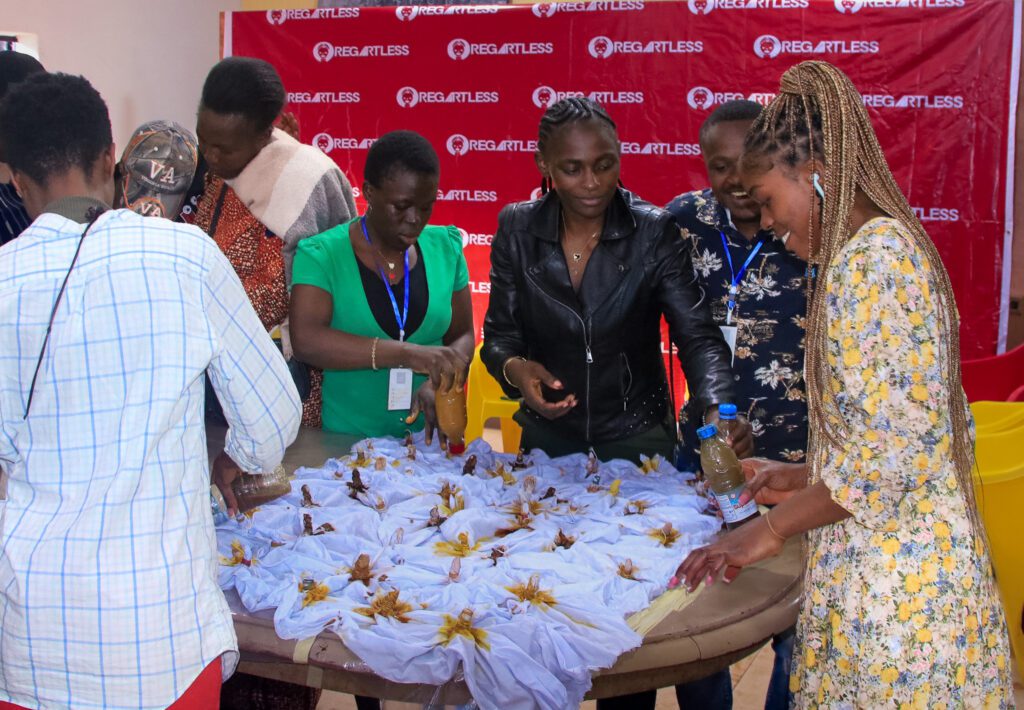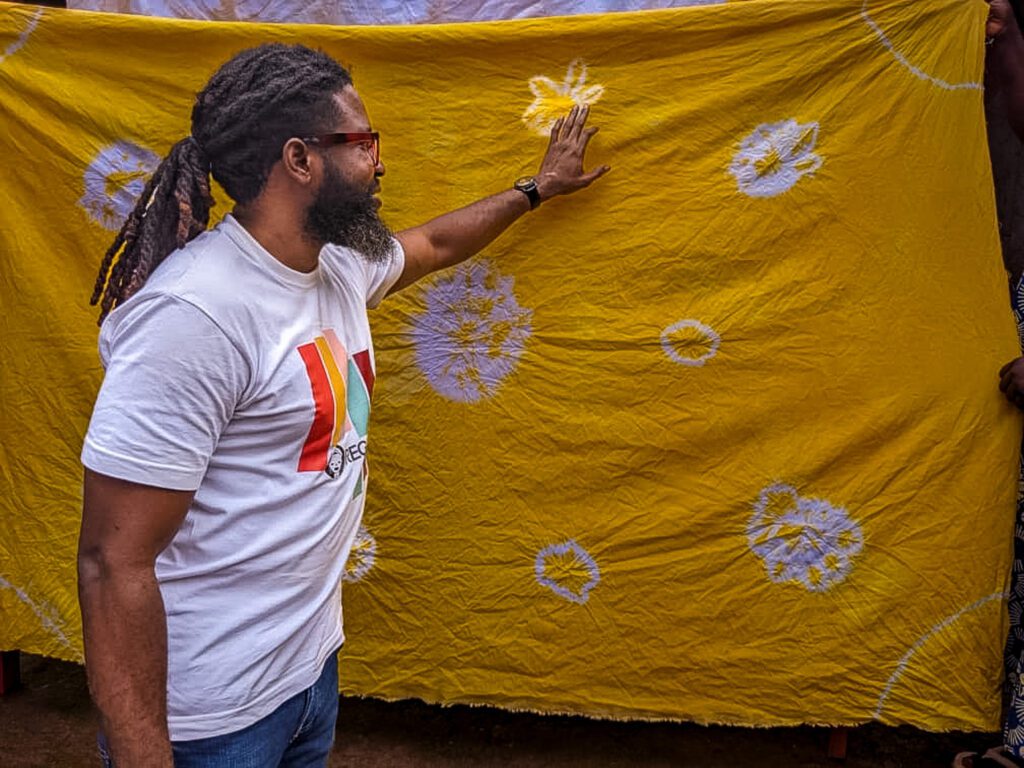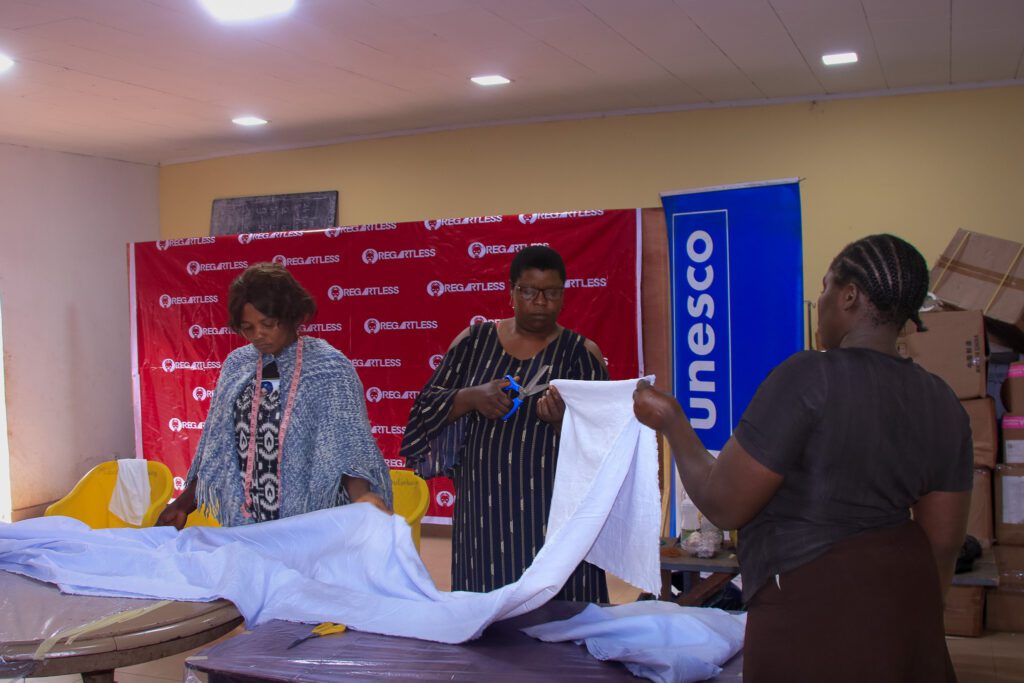Phase 1: Tie and Dye.
The tie-and-dye technique of fabric coloring is an old-fashioned traditional way of expression for local communities, artists, and even individuals. Its symbolic heritage bears community stories, shared values, and experiences. It is a way of expression and a means of improving the livelihoods of practitioners of this art and trade.
This technique is lucrative in Bamenda, as it is in most parts of the grassfield. Traditional dresses worn on special occasions are tied and dyed, mostly with chemical dyes imported into the country. Tinted deep blue, these fabrics are the region’s most expensive locally made fabrics, perhaps because of the cost of raw materials involved in the production.
While the chemical dyes may not be toxic, the process can be toxic and harmful to individuals. Why take the risk when there are sustainable approaches to the practice?

In partnership with UNESCO, RGL organized a 5 days workshop with locals on how to create stunning and durable fabrics through the use of Tie and dye. This workshop experimented with the use of food leftovers, fruits, flower plants and kitchen spices to develop intriguing designs. From the use of turmeric to produce different shades of yellow to the use of the hibiscus flower to produce purple, new knowledge was gained and a dream of transforming this into a small business was born in some participants.

Our baseline survey revealed that over 95% of the participants were unaware of the potential to tie and dye with bioproducts from their own gardens and kitchens. However, REGARTLESS, with a mission to preserve and promote textile heritage, sees this lack of knowledge as an opportunity to empower locals. By using readily available, sustainable, and affordable resources, we can help them turn this traditional art form into a source of living.
Different tie and dye techniques were also experimented. Participants were later divided into groups, where they produced the final pieces for the exhibition. Participants expressed satisfaction in having this experience, which would boost their livelihoods and further contribute to the development of their community. The immediate plan for these participants is to train other community members and set up a sustainable business.



